introduction
The tape measure may seem simple, but if you choose the wrong tape measure sizes, you may go crazy when measuring! Whether it is for renovation, furniture measurement, or daily household use, suitable tape measure sizes directly affect measurement efficiency and accuracy. This article will tell you how to avoid common pitfalls and find the most suitable tape measure size from the internal structure, measurement system, and size classification to purchasing tips of the tape measure. After reading, you will find that the knowledge of the tape measure is far more than just “pulling it out and measuring”!
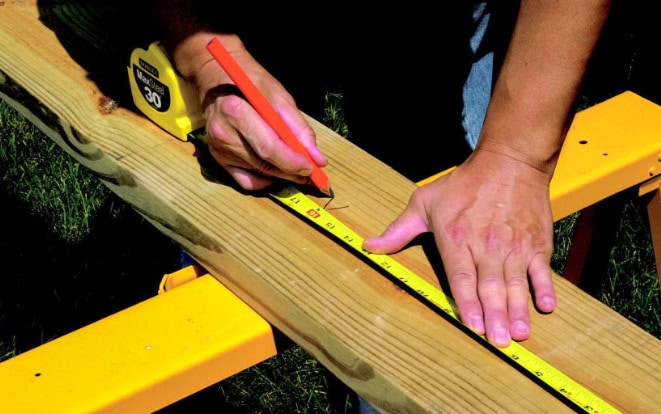
The structure of the measuring tape
Don’t underestimate the simplicity of using a tape measure. There are many ingenious designs hidden in its structure! For example, a 5-meter household tape measure is usually only 16mm wide, while a 50-meter engineering tape measure can be as wide as 32mm. This is not a random design, but is directly related to the load-bearing and durability of the steel belt. The following diagram of the structure of a tape measure will help you better understand the tape measure sizes.
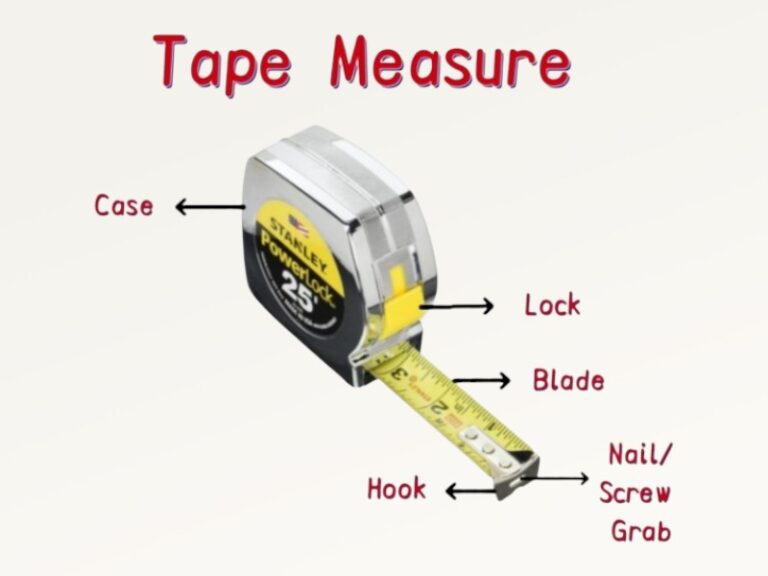
Case: Protects the internal mechanical structure and provides comfortable grip.
Lock: When pressed, the internal metal caliper will clamp the tape (similar to the principle of bicycle brakes).
Blade: The width of the steel tape, usually 13-16mm for household use and 25-32mm for engineering use, with a thickness of 0.1-0.15mm (the thicker, the better the bending resistance).
Hook: The hook on a tape measure is not just there to stop the tape from disappearing back into the case—it actually plays a key role in making measurements accurate.
Nail/Screw Grab: The V-shaped groove on the back of the hook can hold the nail cap (applicable to diameters of 3-8mm), and the measurement starting point can be fixed without an assistant.
Measuring system of measuring tape
The measuring system of a tape measure directly affects its usage scenarios and accuracy. Currently, tape measures are mainly divided into two categories: centimeters and inches. The metric system (centimeter/meter) is suitable for construction, while the imperial system (inch/foot) is often used in furniture, textiles, and other fields. Let’s take a look at the differences between the two measuring systems of tape measures.
1. Imperial System

Units: inches (inch), feet (foot), yards (yard)
Features: Inches are typically divided into fractions: 1/2″, 1/4″, 1/8″, 1/16″, and sometimes even 1/32″
Example: 1 foot = 12 inches, 1 yard = 3 feet
Used in: United States, the United Kingdom, and other regions.
Applications: Common in construction, carpentry, home improvement, and manufacturing in the U.S.
2. Metric System
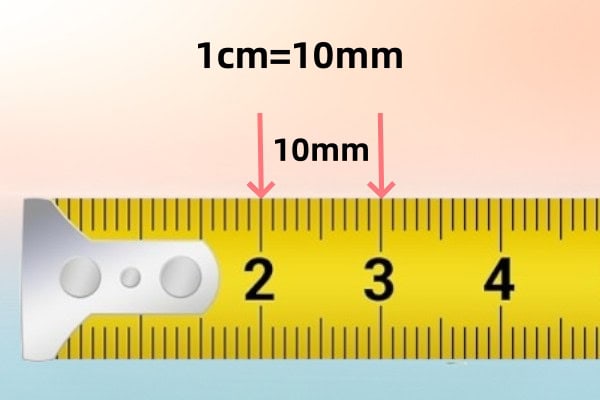
Units: Millimeters (mm), Centimeters (cm), Meters (m)
Features: Decimal, easier to calculate and convert (based on multiples of 10)
Example: 10 mm = 1 cm; 100 cm = 1 meter
Used in: Most of the world (Europe, Asia, Australia, Africa, etc.)
Applications: Preferred for scientific, engineering, and technical work.
Tape measure size classifications
Tape measures come in a variety of lengths, each suitable for a specific job. In the table below, I have compiled the most common tape measure specifications on the market, from mini ones that can be stuffed into a keychain to engineering ones that can measure the length of a house. You will find that a 3-meter tape measure and a 30-meter tape measure are different in terms of not only length but also scale accuracy and tape width.
| Type | Typical Lengths | Tape Width | Accuracy |
| Mini | 1m/1.5m/2m | 10-12mm | ±1mm |
| Household | 3m/5m | 13-16mm | ±0.5mm |
| Professional | 7.5m/10m/15m | 19-25mm | ±0.3mm |
| Engineering | 20m/30m/50m | 25-32mm | ±1mm/m |
| Industrial | 50m/100m | 38mm+ | ±2mm/m |
Length: This is how long the tape measure can stretch. Short tapes are 1m to 5m, longer ones are 7.5 to 10m.
Width: This is how wide the metal blade (the part with the number on it) is. Wider blades are sturdier and will stay straight over longer distances, which is helpful when you’re measuring yourself.
Accuracy: This indicates how precise the measurement is. Some tape measures are more precise than others, for example, a professional tape measure is 0.2mm more accurate than a regular household tape measure.
Below, I have sorted out the most common tape measure sizes on the market and their most suitable specific uses. Why do decorators prefer 7.5-meter tape measure sizes? Why are tailors’ tape measures always only 1.5-meter tape measure sizes? You will find the answers here.
1.5m/60inch Tape measure
Material: Soft, stretchy cloth or plastic
Best for: Tailoring, Sewing, Body Measurements, Arts and Crafts
Features:
- Easily wraps around curves and soft materials
- Lightweight, portable, non-stretchable
- Often used by tailors, dressmakers, and fashion design students
- Great for precise fabric work and body measurements.

3m/10 feet Tape measure
Best for: Home use, quick indoor measurements
Ideal tasks:
Measure small furniture, curtain sizes, and picture frames. Handy for renters, hobbyists, and those who love indoor DIY work
Features:
- Small size, usually fits in a pocket or drawer
- Retractable steel blade or soft tape options
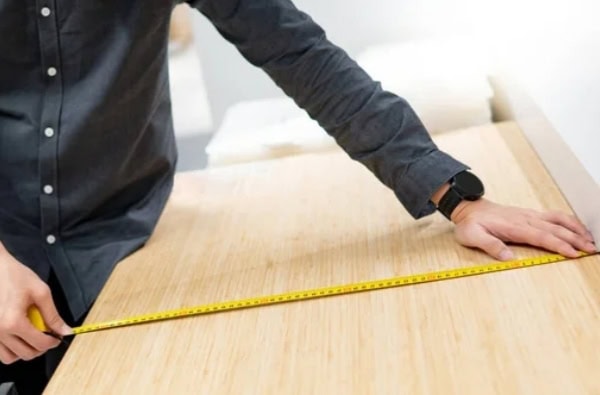
5m/16 feet Tape measure
Best for: General home repairs, DIY, renovation projects
Used by:
Homeowners, renovators, handymen
Measurement range: Long enough to measure most interior spaces and furniture
Features:
- Durable, retractable tape
- Often includes metric and imperial markings

7.5m/25 feet Tape measure
Best for: Professional carpentry, framing, remodeling
Used in: Residential construction, roofing, and decking projects
Features:
- Wider blade for better standout (stiffness over long distances)
- Magnetic hook and rugged case for jobsite durability
- Accurate for single-person use with long spans
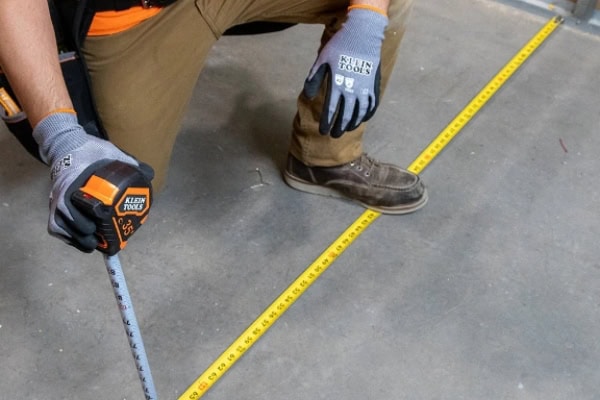
10m/33 feet Tape measure
Best for: Commercial construction, industrial applications
Tasks: Site planning, warehouse layouts, scaffolding work
Features:
- Sturdy housing with a heavy-duty tape blade
- Usually includes metric-only or dual-scale options

30m/100 feet Tape measure
Best for: Surveying, land measurement, outdoor construction
Common users: Surveyors, engineers, landscape architects
Features:
- Housed in an open or closed reel
- Fiberglass or steel tape that resists stretching over long distances
- Marked in meters and centimeters (or feet and inches)
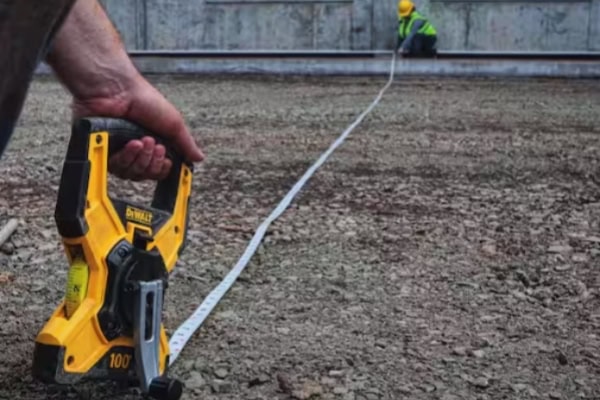
How to Choose the Right Tape Measure Sizes?
Choosing the right tape measure sizes depends on how and where you plan to use them. Whether you’re tackling simple jobs around the house or working on a large construction project, the tape measure sizes and functionalities can make a big difference. Here are some key points to help you find the perfect tape measure sizes.
1. Length
3-5 meters (10-16 feet): The retractable tape measure is Great for home use. These tape measure sizes are perfect for measuring furniture, checking wall space, or doing small DIY projects.
7.5–10 meters (25–33 feet): Long tape measure is great for professionals or anyone working on a construction site, renovation, or renovation.
Different types of tape measures have their characteristics in size, accuracy, and material and are suitable for different purposes. If you need a more comprehensive classification introduction, read 8 Types Of Measuring Tape: A Complete Guide.
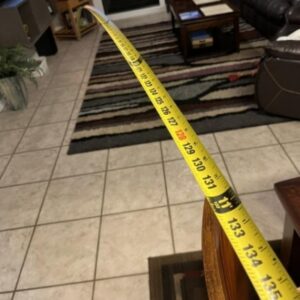
2. Blade Width
12–16 mm: Lightweight and easy to carry, perfect for quick everyday use.
19–25 mm: A wider blade is stronger and more rigid, meaning it can reach out farther without bending. This is especially useful if you’re working alone and need to measure longer distances without support. It also provides more space for larger, clearer markings, making reading easier.
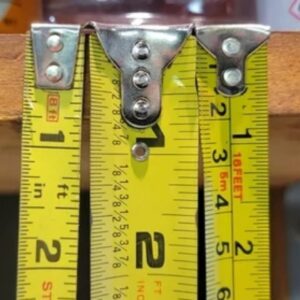
3. Accuracy and Functionality
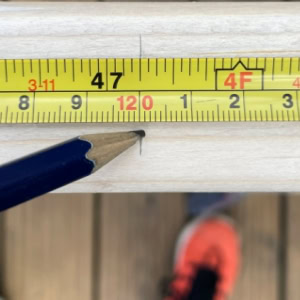
Dual-scale tape measures with metric and imperial scales are more practical and convenient to use.
Nylon-coated blades last longer and are resistant to rust and wear.
If you are dealing with metal surfaces, use a tape measure with a magnetic hook.
4. Portability and Comfort
Choose a compact, lightweight tape measure size that is easy to carry and use on the go.
The ergonomic grip and smooth locking mechanism make you more comfortable when using the tape measure.
Smooth, reliable locking mechanism: A good lock holds the blade firmly in place without slipping, allowing for more accurate readings and safer use.

FAQ
Will the scale of the tape measure wear out? How to maintain it?
Scale wear is one of the most common problems with tape measures. The scale printed with ink may start to blur after 6-12 months of use, while the scale engraved by laser can remain clear for 3-5 years.
Maintenance suggestions:
- Avoid contact with chemical solvents;
- Wipe the tape surface with a dry cloth regularly;
- Avoid high temperature and humidity when storing;
- Do not bend the tape excessively.
Does the width of the tape measure affect its use?
Of course! Narrow tapes (12-16mm) are lightweight and suitable for home use; wide tapes (19-25mm) are stiffer, more suitable for long-distance measurements, and less likely to bend.
Professional advice: For tape measure sizes below 5 meters, narrow width should be selected, and for tape measure sizes above 7.5 meters, wide width should be selected. In addition, the scales of wide tape measures are usually larger and clearer, which is more friendly to users with poor eyesight.
Why does the hook of the tape measure shake?
There is an important reason why the metal hook at the front of the tape measure is designed to be a movable structure. This design can compensate for the thickness of the hook itself (usually 1-2mm), ensuring that accurate results can be obtained whether the hook is stuck on the edge of the object or the hook is against the object. The hook of a high-quality tape measure will use a precise riveting process to ensure that it has the necessary space for movement without being too loose to affect accuracy.
How to measure ring size with measuring tape?
It’s best to use a soft cloth measuring tape or a thin strip of paper to measure your ring size: Wrap the tape/paper around the thickest part of your finger (just below the knuckle), making sure it slides smoothly but not too loose, mark the overlap and measure the circumference.
What should I do if the tape measure retracts slowly?
There are usually three reasons for slow retraction:
- Spring fatigue
- Dust accumulation
- Deformation of the tape.
Solution:
- Lubricate with sewing machine oil (1-2 drops are enough)
- Clean the dust inside the tape measure
- Avoid excessive distortion of the tape
Precautions: After each use, wipe the tape with a cloth before retracting; do not leave it fully pulled out for a long time; check the spring tension regularly.
Why are some tape measures marked with "metric + imperial" scales?
Dual-scale tape measures are mainly used in different scenarios: Metric (cm/m) is suitable for occasions such as construction and decoration that require precise calculations; Imperial (inch/foot) is common in furniture, textiles, and other fields. This type of tape measure usually adopts a double-row scale design distinguished by different colors. Dual-scale tape measure sizes will greatly improve work efficiency.
Conclusion
Choosing a tape measure is like choosing a partner—the longer and more expensive it is doesn’t always mean it’s better; the key is to “match”, and the right tape measure sizes are crucial! By understanding the construction principle, measurement system, size classification, and matching usage scenarios, I believe you have mastered the core logic of choosing tape measure sizes. Remember, there is only one standard for good tape measure sizes: it makes you worry-free and labor-saving when measuring!












